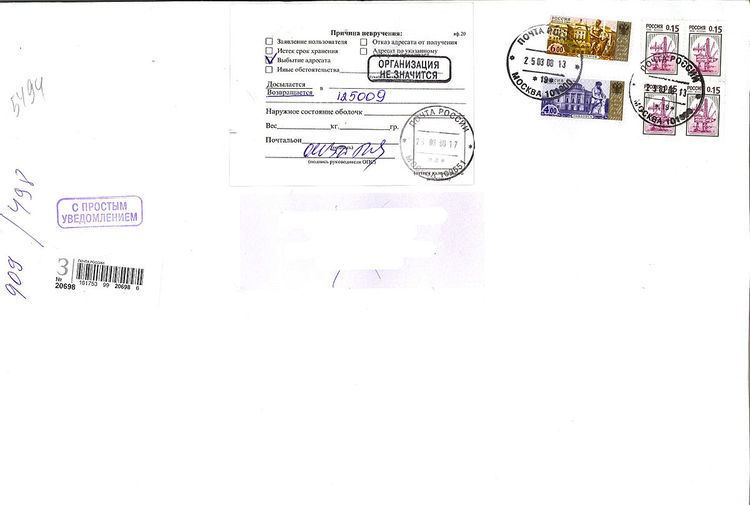 | ||
Dead letter mail or undeliverable mail is mail that cannot be delivered to the addressee or returned to the sender. This is usually due to lack of compliance with postal regulations, an incomplete address and return address, or the inability to forward the mail when both correspondents move before the letter can be delivered. Largely based on the British model that emerged in the late eighteenth century, many countries developed similar systems for processing undeliverable mail.
The term 'dead mail' is perhaps a misnomer, and several jurisdictions have opted for the use of the term 'undeliverable mail' as more clearly representing the status of the item whose transmission has been impeded. Being internal departments within postal administrations, little information about the dead letter office function has ever been made public. A few journal articles and at least one recently published book (Canadian) dealing with this topic have appeared.
Classification as a dead letter is one of the few instances where postal personnel are allowed to violate secrecy of correspondence, ostensibly to search for clues as to the letter's origin or destination. Countries must also set up regulations for the disposal of dead letters, particularly when they contain items of value. Some very valuable items have turned up in undeliverable mail, including a stolen painting by Marc Chagall which turned up in a United States Postal Service sorting center in Topeka, Kansas.
With increased collection and study of the postal markings originating from such offices, the body of literature on this obscure topic may grow. Many countries, including Canada and the United States, have issued special labels for envelopes that have travelled through the dead letter office. Genuinely used examples are highly prized by collectors, although mint labels, because they have no postage value, are often fairly common.
People interested in postal services throughout the world sometimes deliberately send mail to fictional addresses throughout the world to see if a particular nation's postal authority would return the mail to the sender. Collectors of postal markings also use this method in order to receive uncommon postal markings seldom seen in everyday mail.
